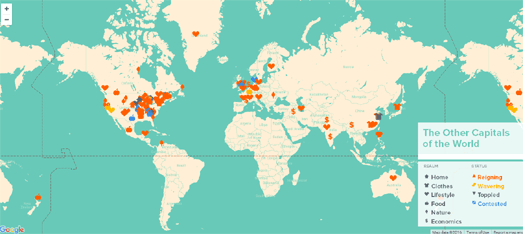The Ubiquitous Power of UMAP: Unraveling the Mysteries of Dimensionality Reduction
The Ubiquitous Power of UMAP: Unraveling the Mysteries of Dimensionality Reduction

In the realm of data analysis and machine learning, the quest for extracting meaningful insights from complex datasets is a perpetual challenge. One formidable hurdle is dealing with high-dimensional data, where the sheer number of features can hinder interpretability and computational efficiency. Enter Uniform Manifold Approximation and Projection (UMAP), a cutting-edge technique in the field of dimensionality reduction that has been gaining widespread attention for its ability to unveil hidden patterns in data while preserving crucial relationships. In this article, we will delve into the intricacies of UMAP, exploring its foundations, applications, and the impact it has had on various domains.
Table of Contents
ToggleUnderstanding Dimensionality Reduction
Dimensionality reduction is a pivotal concept in data analysis, aiming to transform high-dimensional data into a lower-dimensional representation without losing essential information. This process not only aids in visualization but also contributes to enhanced computational efficiency and improved model performance. Techniques like principal component analysis (PCA) and t-distributed stochastic neighbor embedding (t-SNE) have long been employed for dimensionality reduction, each with its own strengths and limitations.
UMAP Emerges on the Scene
UMAP, introduced by Leland McInnes and John Healy in 2018, quickly gained recognition for its unique approach to dimensionality reduction. Unlike some traditional techniques, UMAP’s foundations lie in topological principles and manifold learning. At its core, UMAP strives to preserve the local structure of the data, capturing both global and intricate relationships among data points. The algorithm’s adaptability to diverse datasets and its ability to handle large-scale data efficiently have propelled its popularity in various scientific and industrial domains.
The Mathematics Behind UMAP
To comprehend UMAP’s power, it is essential to grasp the mathematical principles underpinning its functionality. The algorithm leverages concepts from Riemannian geometry and algebraic topology to construct a low-dimensional representation of the data. UMAP begins by constructing a fuzzy set of relationships between data points in a high-dimensional space. This information is then optimized using stochastic gradient descent to produce an accurate, low-dimensional representation.
Preserving Global and Local Structures
One of UMAP’s distinctive features is its emphasis on preserving both global and local structures within the data. Global structures represent overarching patterns that define the dataset, while local structures capture finer details and relationships between nearby data points. Striking a delicate balance between these two aspects allows UMAP to generate embeddings that faithfully represent the underlying structure of the data, a characteristic that sets it apart from many other dimensionality reduction techniques.
Applications Across Domains
The versatility of UMAP has led to its adoption across a spectrum of fields. From biology and genomics to finance and image analysis, UMAP has demonstrated its efficacy in unraveling complex relationships and patterns. In bioinformatics, for instance, UMAP has been instrumental in deciphering gene expression profiles and understanding cellular heterogeneity. Similarly, in finance, the algorithm has proven valuable for visualizing market trends and identifying clusters of related financial assets.
Visualizing High-Dimensional Data
One of the primary applications of UMAP is in the realm of data visualization. Visualizing high-dimensional data is challenging, as human perception is inherently limited to three dimensions. UMAP addresses this challenge by projecting data points onto a lower-dimensional space while preserving the essential structures. This not only facilitates better understanding but also enables the identification of clusters, outliers, and patterns that may remain hidden in the original high-dimensional space.
Enhancing Machine Learning Workflows
In addition to its role in visualization, UMAP has found widespread use in enhancing machine learning workflows. The reduced-dimensional representations generated by UMAP can serve as feature inputs for various machine learning models. By capturing the intrinsic relationships within the data, UMAP embeddings often lead to improved model performance, faster training times, and increased interpretability. This integration with machine learning pipelines has made UMAP a valuable tool for data scientists and researchers alike.
Challenges and Considerations
While UMAP has garnered acclaim for its effectiveness, it is not without its challenges and considerations. The algorithm’s sensitivity to hyperparameters, such as the number of neighbors and minimum distance, requires careful tuning for optimal results. Additionally, UMAP may not always outperform other dimensionality reduction techniques in every scenario. Understanding the nature of the data and the goals of the analysis is crucial for selecting the most suitable method.
Open-Source Community and UMAP
The success of UMAP is not confined solely to its algorithmic prowess; its open-source nature has played a pivotal role in its widespread adoption. The algorithm is available through various programming languages, including Python and R, making it accessible to a broad community of researchers, data scientists, and developers. The collaborative effort of the open-source community has led to continuous improvements, bug fixes, and the development of user-friendly interfaces, further fueling UMAP’s integration into diverse applications.
Looking Ahead: Future Developments and Challenges
As UMAP continues to leave its mark on the world of data analysis, researchers are exploring avenues for further refinement and adaptation. Ongoing efforts focus on addressing challenges related to scalability, interpretability, and robustness across different types of data. As the field evolves, UMAP is likely to play an integral role in shaping the future of dimensionality reduction techniques and their applications.
Conclusion
Uniform Manifold Approximation and Projection (UMAP) has emerged as a powerful tool in the realm of dimensionality reduction, providing a unique approach that balances global and local structures within high-dimensional data. Its applications span diverse domains, from genomics to finance, and its impact on data visualization and machine learning workflows is unmistakable. As the open-source community continues to contribute to its development, UMAP is poised to remain at the forefront of innovative solutions for unraveling the mysteries hidden within complex datasets. As we navigate the evolving landscape of data analysis, UMAP stands as a beacon, illuminating the path toward a deeper understanding of our data-rich world.



